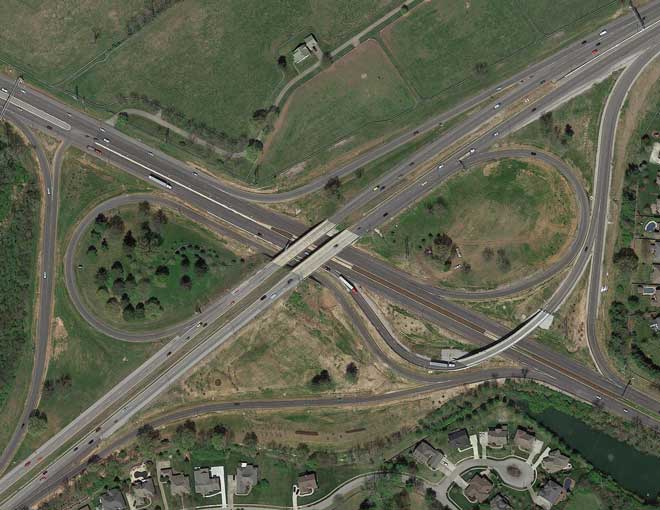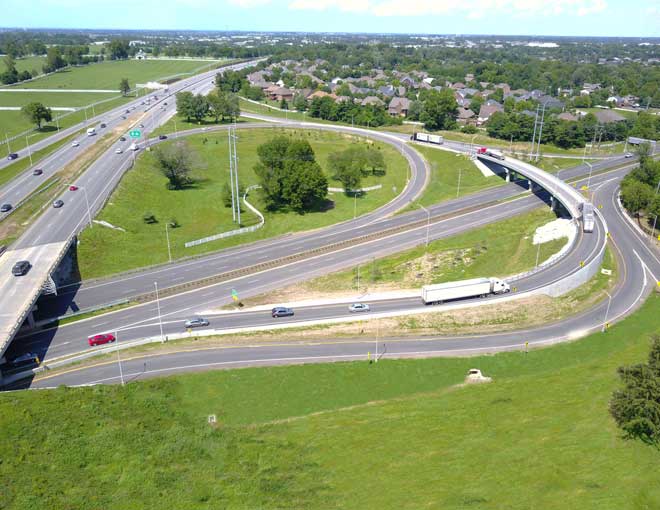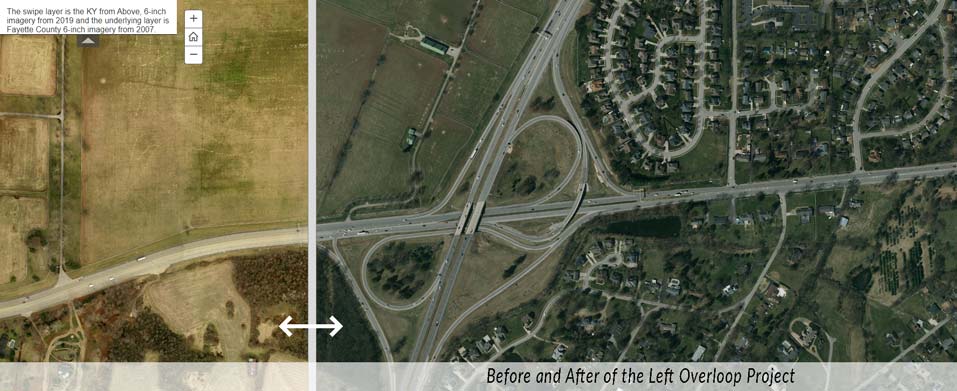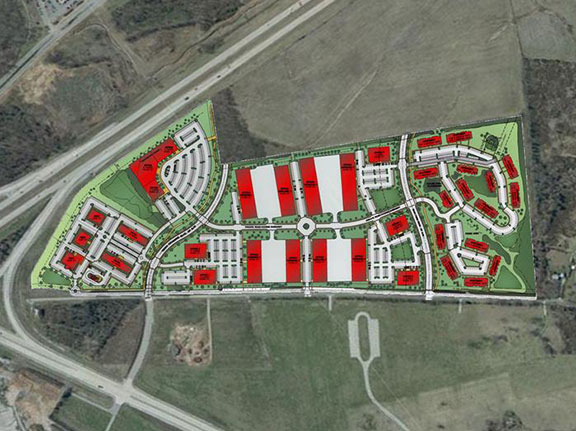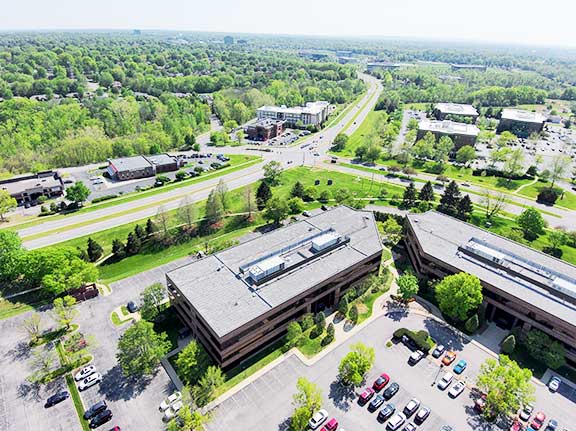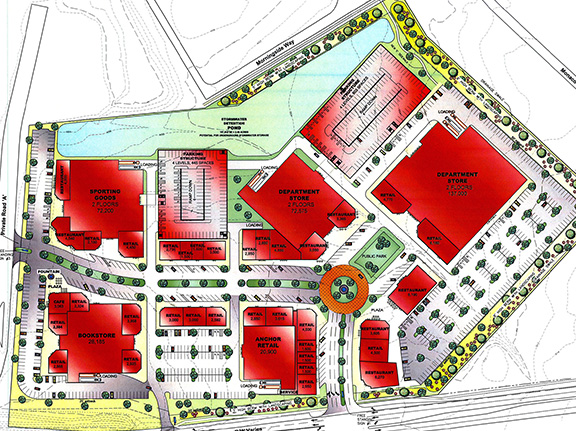Project Description
The Left Overloop – US 60/KY 4
Lexington, Kentucky
Here in the heart of Kentucky’s Bluegrass region, the world’s most magnificent thoroughbred racehorses dot the hillsides of idyllic, rolling green pastures enclosed by white wooden horse fences. As you travel between the cities of Lexington and Versailles, Kentucky, near the intersection of US60 and KY4, you will encounter iconic, ivied Keeneland Racecourse and legendary Calumet Farm. Boasting six Kentucky Derby Winners and three Triple Crown Winners, Calumet Farm is characterized by its green-roofed barns painted white with red trim. Simply put, it is the most famous horse farm in the world.
Yet for decades, untouchable Calumet Farm and the equestrian environs contributed to a thorny engineering challenge. Since its opening in 1965, the three-loop cloverleaf connecting New Circle Road (KY4) with Versailles Road (US60) near downtown Lexington had become increasingly dangerous. The interchange posed several problems, chief among them two dangerous weaves. As one local newspaper reporter put it: “I have never been more frightened in Lexington traffic than when I had to try to exit New Circle Road onto Versailles Road with a tractor-trailer on my rear bumper and another one trying to get onto New Circle.”
In typical circumstances, this would be an easy roadway engineering fix. However, given the signature topography, aesthetic needs complicated what could have otherwise been a straightforward project. An unnecessarily “overbuilt” solution, for example, one requiring unsightly traffic signals or several new overpasses, would spoil the special sense of place of Kentucky horse country on this stretch of highway referred to as “The Gateway to the Bluegrass.”
Our solution is what we believe to be a first of- its-kind interchange that we’ve dubbed the Left Overloop. This new interchange loop type ramp configuration realigned the existing right turn loop as a left turning overpass, eliminating conflicting weave movements. The inventive, affordable solution may enable highway engineers to solve problems where space or funding is not available for traditional flyover directional interchange reconstruction.
Ultimately, we see this project as one of “preservation.” We preserved motorist safety, taxpayer dollars, and the unique sense of place of “The Gateway to the Bluegrass.”


